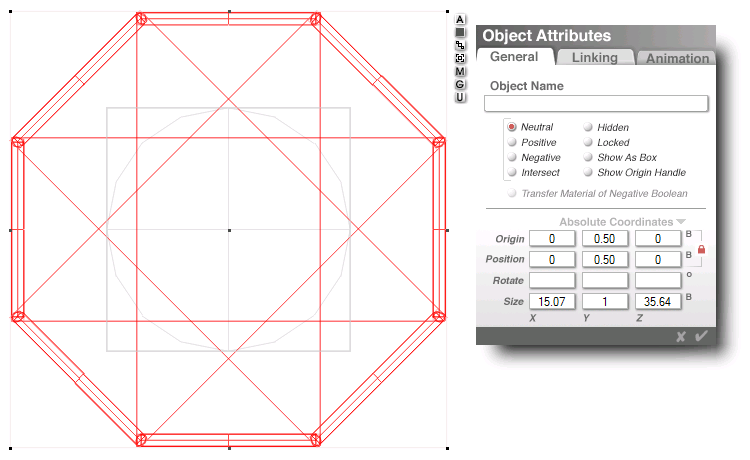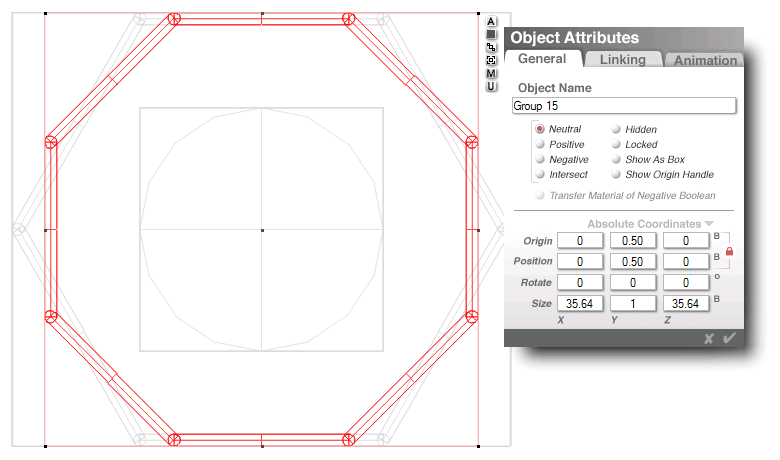wondering how octagons fit just so:
i'll make a template octagon object
as i've already done with a hexagon
and i could start from scratch, but
i want to maintain some continuity
so, i'll just import that object
and make an octagon out of that
|
|
| 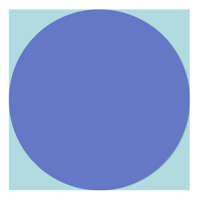 |
overhead, rendered wireframe composite
of the hexagonal object group i made...
full, selected red outline (below right)
...and a tight zoom of the far left corner
(below, far left) showing individual objects
|
|
|
|
|
|
|
so, in making an octagon from my hexagon:
using the same objects i have, already...
using the same textures, so they'll match
(and i can always change the color later)
|
|
|
my hexagon object group
measures 41 x 35.64 units
...discounting the thickess
of the sides and corners...
which are each 1 unit thick
(twice one half, each side)
point to point, it measures
40 x 34.64 = 2 (20 x 17.32)
|
|
|
|
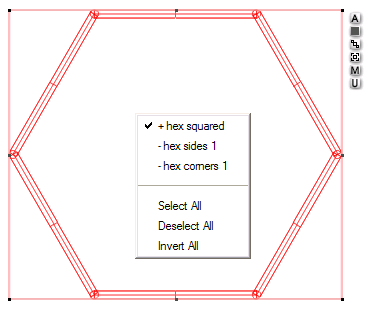 |
i have it further grouped by sides and corners
to change those categorically, anytime (above)
but i'll just ungroup this whole thing (below)
...keeping only the top side and its 2 corners
...deleting the rest (they'll only confuse me)
|
|
|
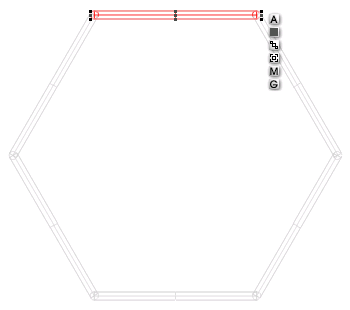 |
so... just keeping the
2 corners and one side
from the hex object...
|
|
|
group those together, duplicate... and
put the new one negative Z from center
i now have 2 identical sides (as groups)
opposite center, positive and negative Z
each with 2 rounded corners (cylinders)...
and when grouped, together that's centered
|
|
|
|
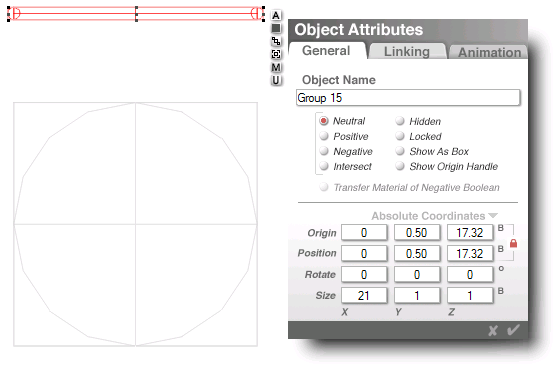 |
what remains, grouped together or not
...their mutual Z coordinate is 17.32
|
...that is: up, or north, from center
(as: the top side of a hex centered)
|
|
|
 |
|
|
|
now, duplicate that group and rotate it 90�
group both of those, duplicate n rotate 45�
so, now i have eight sides, all centered...
|
and with twice as many corners as i need...
i'll delete the extras later, when i'm done
|
|
|
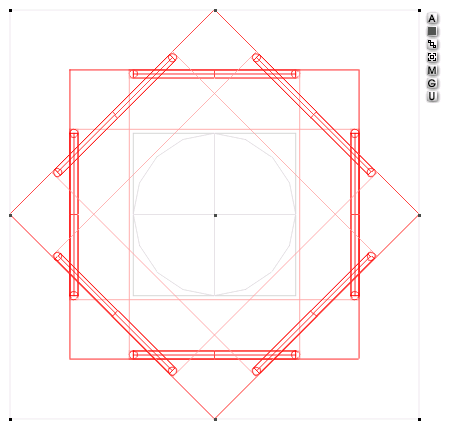 |
|
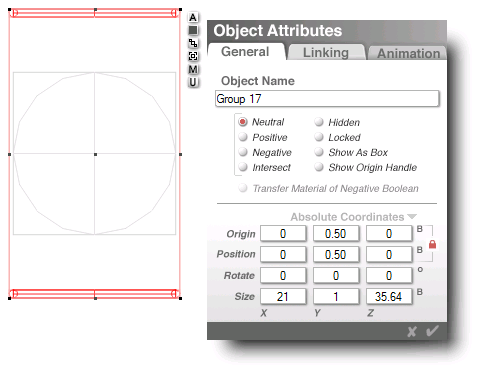 |
here's my octagon sides... but too long...
first, ungroup all of this... just once...
not to first level, of 8 individual groups
...or zero level, of individual objects...
...i want 4 pairs of sides, at 90� and 45�
|
select just one group and reduce its width
(below) until dots match top line of 17.32
|
|
|
the side's width remains one unit
only its length is being adjusted
|
...and it's still proportional...
with the dots being squashed here
what i'm aiming for is the center
|
|
|
|
|
and then there's this:
little freaky thing...
i almost didn't notice
|
...see, it started at 21
...and i just reduced it
a couple units at a time
|
...it landed right on it
...at an exact even unit
so that got my attention
|
cuz i started with a hex
20 proportioned >> 17.32
|
the line groups measure:
...15 units wide x 35.64
|
and the dot's new coords
...close: (-7.20, 17.30)
but my target is: 17.32
|
|
|
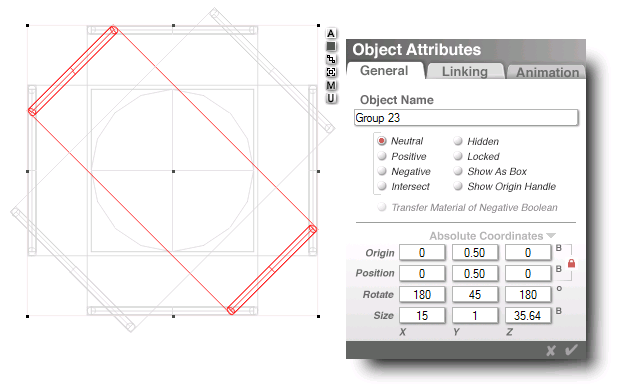 |
|
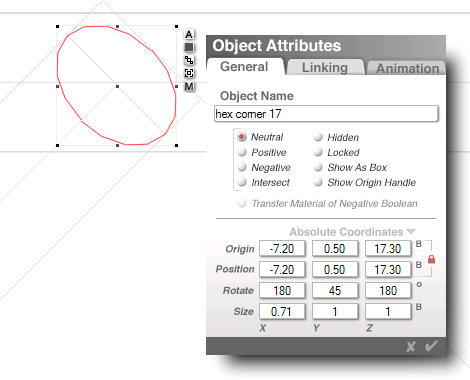 |
so that's interesting
...stumbled upon some
...basic, fundamental
...geometry, there...
|
proportional to the hex sides of: 20 x 1
but, with an additional 1 unit (2 halfs)
(for the radii, of the cylinder corners)
the actual side, point to point is 14.29
|
|
|
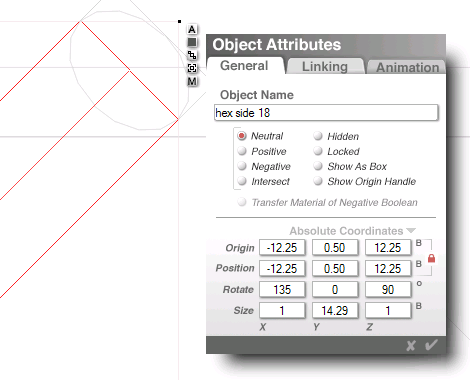 |
|
...and... just noticing: it's
close enough at an even 15...
|
which, in half, is 7.5
over 10 is 0.75 or 3/4
|
but that's the whole group...
see, the program is computing
the proportions automatically
|
...notice the polygon's
sides are still true...
16 sided, right edge on
|
|
|
...the dot is squashed to 0.71
which, i can only assume to be
rounded up from .707 sine wave
or anyways, close enough again
|
|
|
|
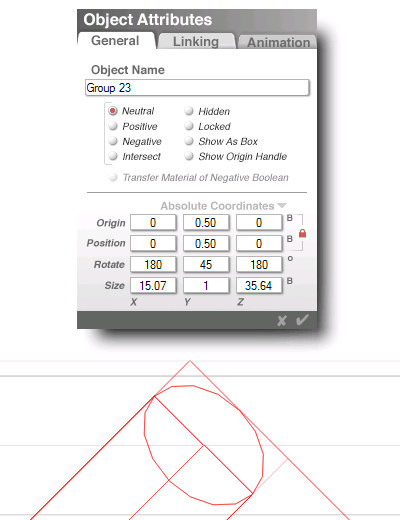 |
so, back to the group, up from 15
stretching the group out to 15.07
puts the dot right on the line...
so, that would probably be 0.0707
|
|
|
|
|
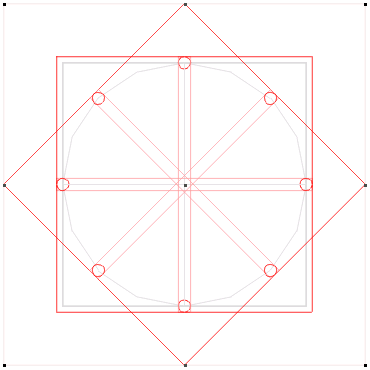 |
ungroup all those to zero level:
then regroup and rotate to 22.5�
|
|
|
no matter what i rotate them to
...their centers will still be
right on the circle edge line
|
|
|
but i want pairs with common coords
so i can put a cube line object in:
|
|
|
regrouped, the whole area is 19.48 square
that's how far the one unit diameter dots
approach the 20 side circle-square's edge
(at their angular displacement of 1/16th)
|
|
|
|
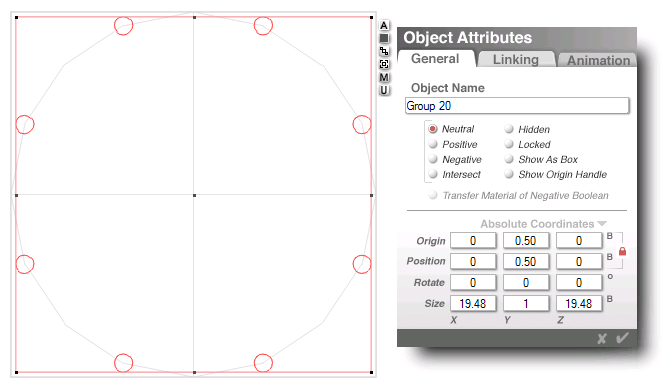 |
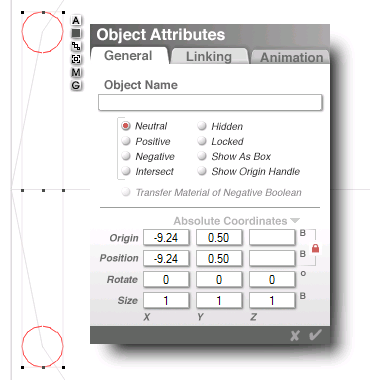 |
the actual points, their centers
9.24 units... relative to center
and that's where i put the sides
|
length of the line between them
would be double that coordinate
...which... works out to: 18.48
...which is one less than 19.48
(the 1 being 2 halfs diameters)
|
...the other coordinate is 3.83
...the octagon's sides' lengths
being... double that... at 7.66
|
|
|
|
that 3.83 x 8 = 30.64
30.64 - 18.48 = 12.16
and 12.16 / 4 = 3.04
for a 20 sided square
|
for a 10 sided square
...that would be 1.52
|
for a 1 sided square
that would be 0.152
|
|
|
1/8 = 0.125
3/16 = 0.1875
5/32 = 0.15625
= 10/64 = 20/128
= 40/256 = 80/512
|
|
|
|
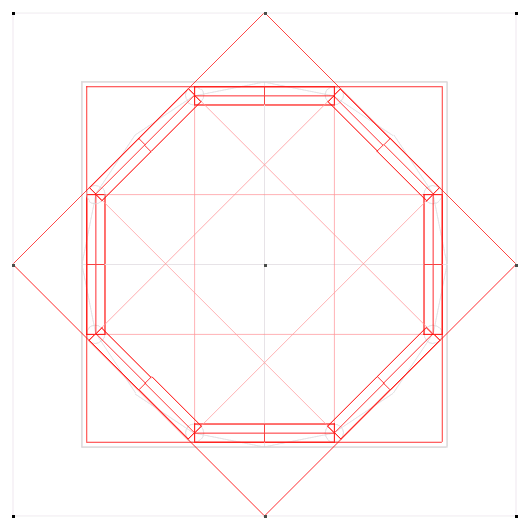 |
0.15625
- 0.152
= 0.00425
x 4
= 0.017
|
|
|
1/64 = 0.015625
9/64 = 0.140625
|
1/128 = 0.0078125
19/128 = 0.1484375
|
|
|
|
|
anyways, i put my sides in at 9.24
...and, each with a length of 7.66
repeat the aforementioned process:
...rename, regroup, retexturize...
...and now, compare to the circle:
|
but, what i have is not a common octagon
that we're used to seeing in a stop sign
(with sides flush to: up, down and side)
...this one is 20 units, from the points
so, the corners touch the circle's edges
|
|
|
so, an octagon, at that 3/4 turn,
is demonstrating the 3 internally
...locking on to it, at the curve
|
the 3:4 ratio is natural for an octagon
the 4 in this case being the sum of the
2 objects, corner and side, 0.2 each...
|
|
|
...very celtic, very spirograph:
...even wth the different colors
it's hard to tell where one line
ends, and another keeps going...
|
almost as if that's what it is...
it's just naturally demonstrating
an inherently incremental spiral:
like the golden mean or a fractal
|
and where it's not "exactly" exact
...is because it's not a circle...
it's a square'd off version of one
...or a square's... version of one
|
|
|
|
|
|
or it could also be said to be
a circle's version of a square
|
the octagon is as a landmark or signpost
...inbetween... a square and a circle...
|
|
|
in this one (above), with just 2 outer octagons
...the solid blue and green octos are normal...
and in the one (below), adding 2 more octagons:
the paler blue and green being: 11.25 and 33.75
|
|
|
|
|
|
and we could do this all day
(until we ran out of colors)
...a natural infinity mirror
|
proportionally accurate
only the scale projects
(inward and/or outward)
|
|
|
with their relative value to each other
being their common phase of interest...
and their lateral counterparts, sharing
similarities... reflectively relatively
...this thing measures stuff for you...
|
|
|
|
handy thing to have around
...save that object group:
move on to the next thingy
|
|
|
